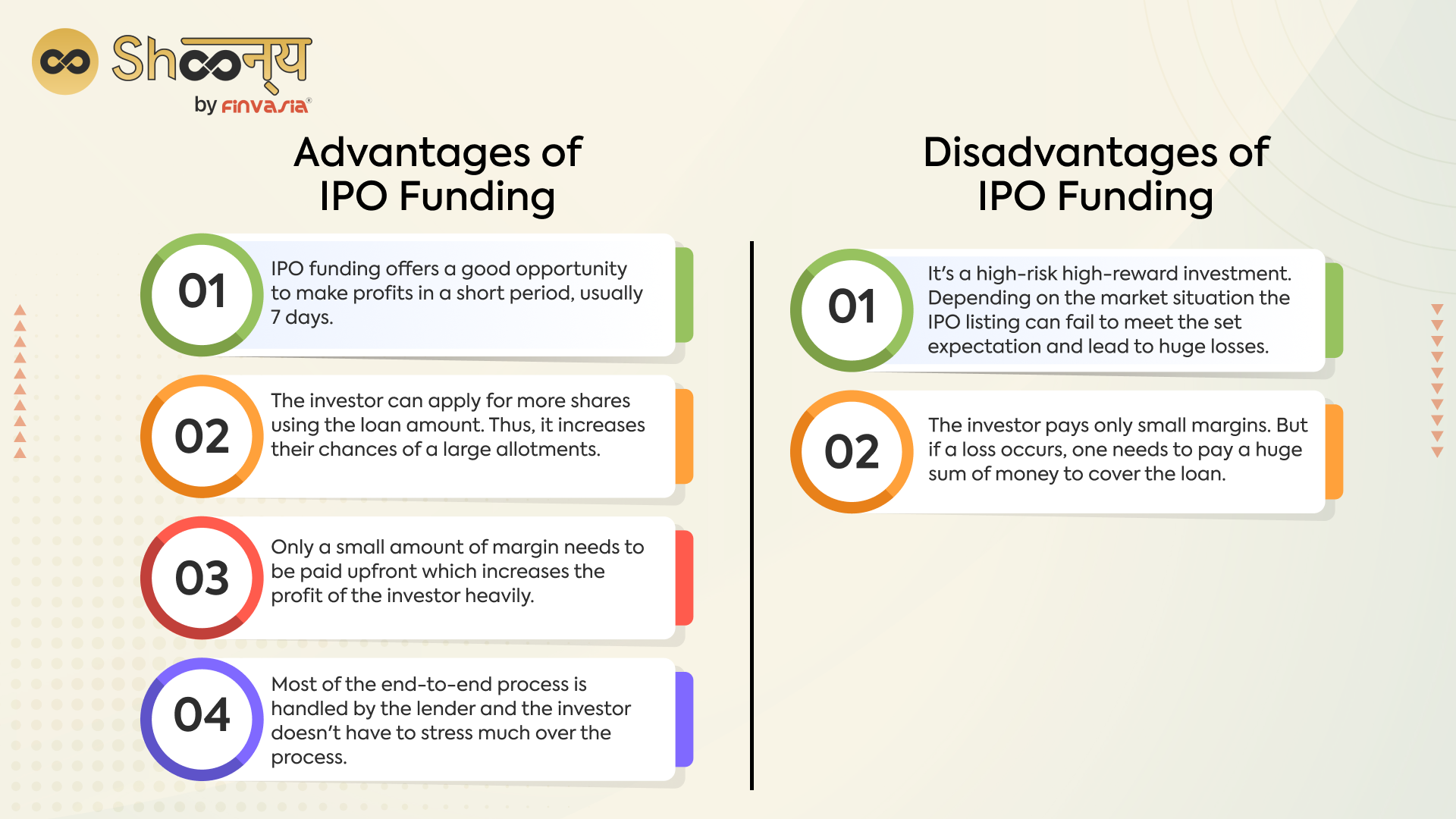The demand for IPO funding has increased over the last few years. Many investors are using IPO funding to make profits in the stock market. In this article, we will see what IPO funding means, why it is being availed by many investors and what investors and lenders gain out of it.
What is IPO Funding?
When an IPO gets announced, investors from different categories start applying for the shares. Biddings for these shares start to happen usually behind closed doors. An investor needs to be ready to invest in a huge number of shares to get them alloted. When a high net worth individual(HNI) needs funding to help with getting these shares of companies that are in the process of getting listed IPO stock market, they approach NBFC for IPO funding.
IPO funding is a loan given to HNI by NBFC(Non-Bank Finance Company) to help them apply for the primary stock. The NBFC lends money to the HNI at a certain interest, and the HNI uses this money to get shares in the company. On the day of listing, the investor sells the shares and makes a profit, and repays the loan.
Why IPO Funding?
IPO funding is a lucrative way for NBFCs to make huge profits in the short term. The loan time is usually seven days from the IPO closing day to the date of listing. Most lenders offer some flexibility to hold or sell the shares depending on market trends. The investor lending money from the NBFC only has to pay a small margin for applying in the IPO, and the lender funds the rest amount. The NBFC pays for the process and recovers its money by selling the shares allocated to them on the listing date.
Steps of IPO Funding
1. A high net-worth individual (HNI) approaches an NBFC regarding the IPO of a company.
2. The NBFC analyses the value of the investment and the IPO the investor wants to invest in.
3. A formal agreement about the loan amount and interest drawn.
4. The customer pays a margin amount upfront to avail of the loan. The lender pays the amount of the loan.
5. The borrower opens a Demat account for funding purposes which the lender operates.
6. The lender transfers the loan amount to this Demat account. The borrower transfers a margin amount and the interest amount upfront to this account.
7. On the day of listing, the investor sells the shares. If they make profits, they pay the loan amount and interest amount to the lender, get the money paid back upfront and get to keep the remaining amount as profit.
8. If the investments become a loss, the lender takes money from the margin payment to clear the loan and interest of the borrower. If the loan is amount more than the margin amount. The investor has to pay more money and clear the loan.
Advantages of IPO Funding
1. IPO fund offers a good opportunity to make profits quickly, usually 7 days.
2. The investor can apply for more shares using the loan amount. Thus, it increases their chances of large allotments.
3. Only a small margin needs to be paid upfront, which increases the investor’s profit heavily.
4. Most of the end-to-end process is handled by the lender, and the investor doesn’t have to stress much over the process.

Disadvantages of IPO Funding
1. It’s a high-risk, high-reward investment. Depending on the market situation, the IPO listing can fail to meet the set expectation and lead to huge losses
2. The investor pays only small margins. But if a loss occurs, one must pay a huge sum to cover the loan.
Conclusion: IPO funding is a process through which good profits can be made in a short time by the investor and the lender. If you are interested in IPO funding, visit Shoonya today and learn more about market conditions and the value of IPOs. Shoonya is a multi-asset trading platform where you can compare various companies through advanced comparability tools and get the best deals.

